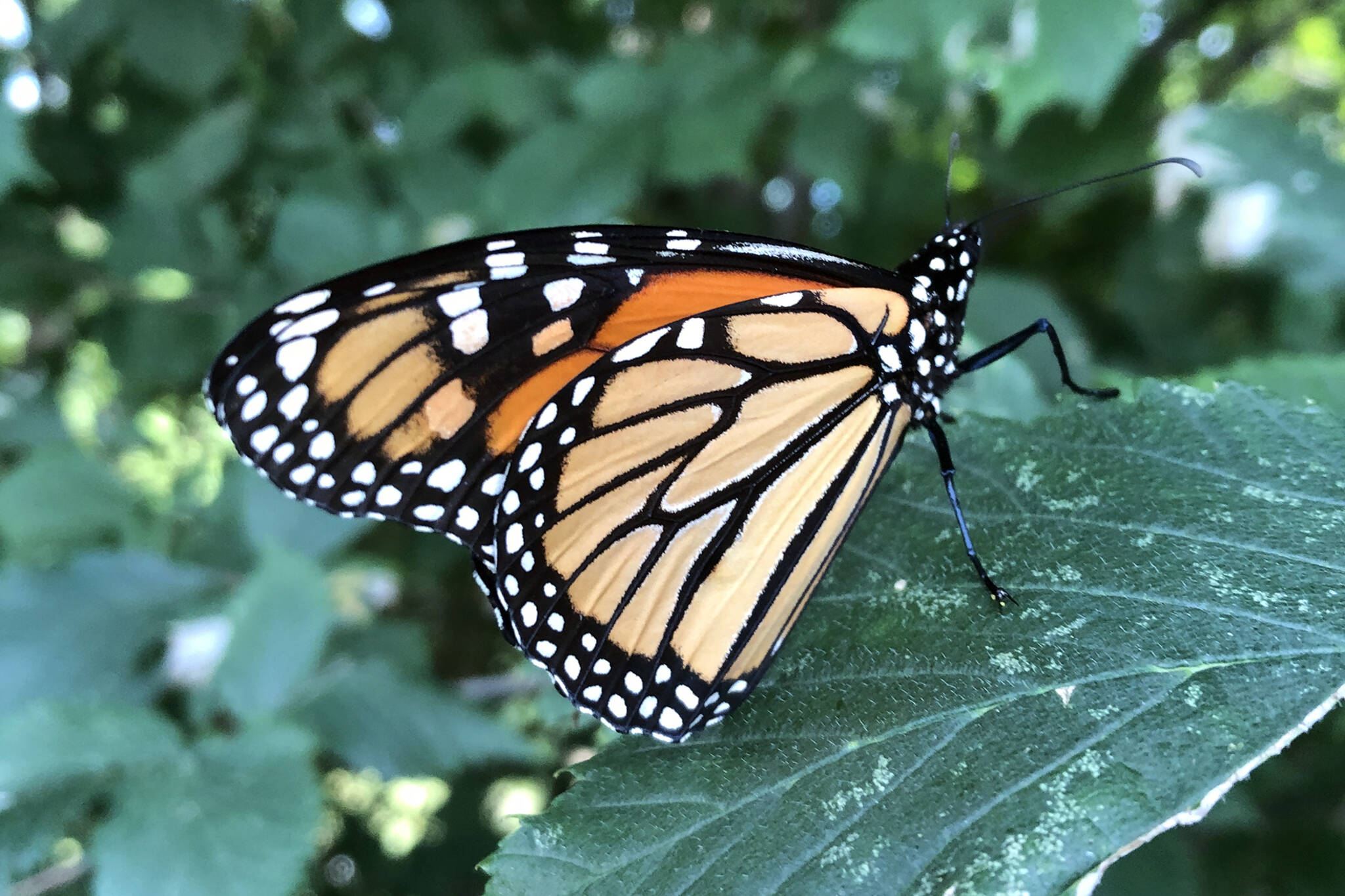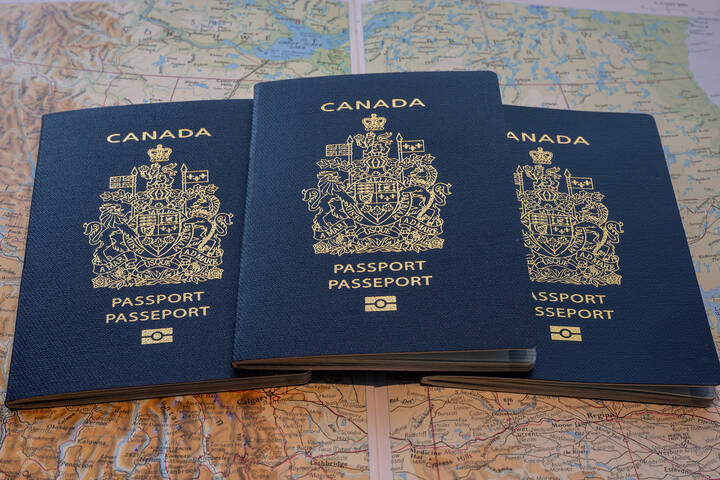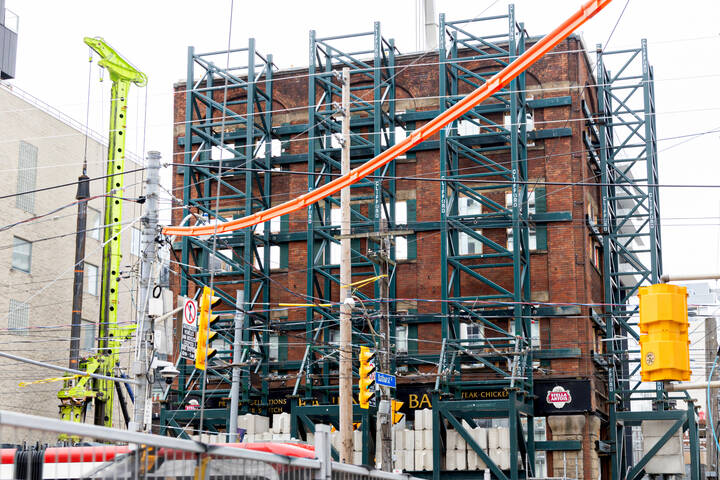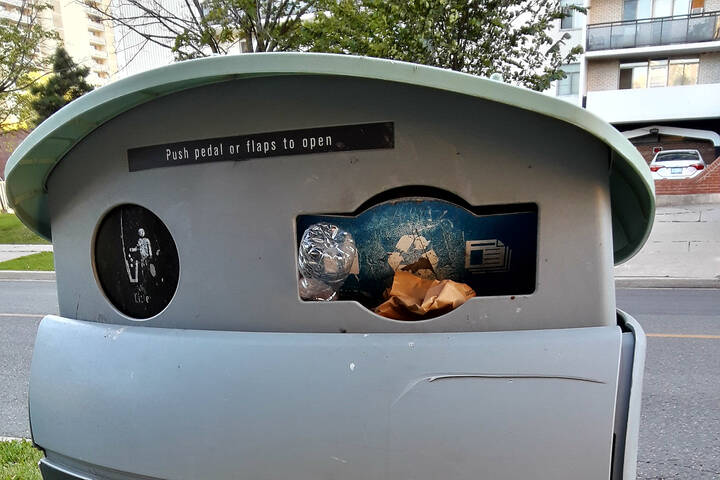
Monarch butterflies are now officially endangered and that's bad news for Ontario
The majestic and impossibly tenacious Monarch butterfly is, as of today, formally on the brink of extinction — a development that is both breaking the hearts and raising (even more) alarm bells for ecologists across North America.
If you live in Toronto or anywhere else in Southern Ontario, you're undoubtedly familiar with the iconic black and orange insect. Whether you know its name or not, you've almost definitely seen a monarch or 5,000.
Known as one of the most recognizable butterflies on earth, monarchs can be seen locally in street murals, on posters, in gardens and flittering across the purpose-built pollinator pathways of this city every summer.
They're delicate and they're pretty, but these "flying miracles of nature's genius" are truly badass, migrating up to 4,000 kilometres from Canada to Mexico anually once the weather cools down, representing one of the longest journeys of any insect in the world.
Sadly, if their numbers keep declining, this won't be the case for much longer.
One of my favorite summer visitors to our yard is now considered endangered...value each encounter. https://t.co/Pe0Tp1FqYF
— Travis Ryan (@IndyWildWatch) July 21, 2022
"The migratory monarch butterfly (Danaus plexippus plexippus), known for its spectacular annual journey of up to 4,000 kilometres across the Americas, has entered the IUCN Red List of Threatened Species™ as Endangered, threatened by habitat destruction and climate change," announced the The International Union for Conservation of Nature (IUCN) on Thursday.
"Legal and illegal logging and deforestation to make space for agriculture and urban development has already destroyed substantial areas of the butterflies' winter shelter in Mexico and California, while pesticides and herbicides used in intensive agriculture across the range kill butterflies and milkweed, the host plant that the larvae of the monarch butterfly feed on."
In addition to deforestation and toxic chemicals — both by products of human industrialization — experts blame climate change (also) for killing off insects, as well as one of the monarch butterfly's key food sources: milkweed.
"Climate change has significantly impacted the migratory monarch butterfly and is a fast-growing threat," notes the ICUN. "Drought limits the growth of milkweed and increases the frequency of catastrophic wildfires, temperature extremes trigger earlier migrations before milkweed is available, while severe weather has killed millions of butterflies."
Scientists say the western population of migratory monarch are at greatest risk of extinction after declining by an estimated 99.9 per cent (or, 10 million to 1,914) since the 1980s.
This summer I have seen only one Monarch butterfly, and I spend 80% of my time in nature. Where have all the Monarch's gone? #environment #ButterflyCount #Ontario #nature #NaturePhotography #environmentaljustice #ecosystems c.apaiement 2018 pic.twitter.com/JuRJ6AJFlf
— Annette (@whynotannie) July 16, 2022
With the world's top experts on at-risk species worried that there may not even be enough of these butterflies left to restore the population, people all over North America should be cognizant of how they can help.
"It is difficult to watch monarch butterflies and their extraordinary migration teeter on the edge of collapse, but there are signs of hope. So many people and organisations have come together to try and protect this butterfly and its habitats," says the New Mexico BioPark society's Anna Walker.
"From planting native milkweed and reducing pesticide use to supporting the protection of overwintering sites and contributing to community science, we all have a role to play in making sure this iconic insect makes a full recovery."
Significant efforts have gone into boosting monarch populations here in Ontario and in North America at large in recent decades. Government bodies in Canada, America and Mexico have all been working together to preserve this incredible and mysterious creature.
Fans of the brilliant orange Lepidoptera and pollinators in general were thrilled a few years back to learn that there was evidence of monarch butterflies once again expanding in population.
Migration counts hit a 12-year high in 2018-2019 according to researchers at Cornell University, with reports of a 144 per cent increase in numbers over the season previous.
🦋“As long as we have butterflies, we will have life.”
— WWF (@WWF) July 19, 2022
Watch how Nana Rosa and her friends are creating aromatic habitats for majestic Monarch butterflies to keep them returning to their winter home. #AgeOfChange @thisisreckitt https://t.co/Bwk6AVzGNJ pic.twitter.com/JkFtiWLEHu
Scientists urged cautious optimism at the time, noting that the influx in monarchs could be an anomoly, but also praised the many organizations and individuals who had been actively planting milkweed along "pollinator pathways" and taking other measures to help these and other important insects thrive.
As it turns out, they were right; monarch butterflies are now on the IUCN's red list, alongside 147,517 other endangered species. Some 41,459 are currently threatened with extinction.
The World Wildlife Fund of Canada (WWF) reports that it has seen a dramatic and sustained decrease of the areas occupied by monarchs in Mexico during winter over the past two decades. That is to say that this isn't just a Canada or U.S. problem — they're not refraining from migrating, they're struggling to exist.
The monarch is currently listed in Canada as a species of special concern under the federal government's Species At Risk Act, though this is likely to change in short order now that it's been red-listed by the IUCN, which is one of the leading wildlife conservation authorities on precious Planet Earth.
"It is tragic to see one of the world's most well-known butterfly species, with remarkable migratory behaviours and local cultural significance, threatened with extinction," said the Zoological Society of London's Sophie Ledger in the IUCN's report on Thursday.
"Considering the current global biodiversity crisis, it is critical to uncover what is happening with diverse and functionally important species such as these before it's too late."
Lauren O'Neil
Latest Videos
Latest Videos
Join the conversation Load comments







